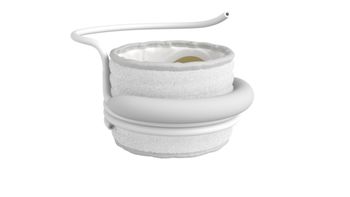
- April 25, 2020 edition
- Volume 97
- Issue 8
Coronavirus practice guide, part 3: Addressing staff and patient concerns
As the COVID-19 coronavirus sweeps the globe and uncertainty increases, physicians and practice leaders should turn their attention to the welfare of their staffs and their patients.
As the COVID-19 coronavirus sweeps the globe and uncertainty increases, physicians and practice leaders should turn their attention to the welfare of their staffs and their patients.
Gary Price, MD, a Connecticut plastic surgeon and president of The Physicians Foundation, says that in times of crisis such as this, it is important to start by re-examining the practice’s fundamental mission.
“We're here to keep people healthy and happy in the end,” Price says. “So that's an important thing to keep in mind as we make the rest of the decisions.”
Keeping staff safe and calm
Price advises getting as much information as possible about the situation, so that physicians and practice managers can ask the proper questions, such as whether it is necessary to have patients who are not in dire need of care come into the office or facility.
Once information is gathered, experts say that communication with staff is crucial, not only so they know what is required of them but also to calm any fears they may have.
Jagdesh Khubchandani, Ph.D., a Ball State health science professor, says practice leaders should remember that their staff is made up of human beings under a remarkable amount of stress and should adjust their interactions in the interest of maintaining staff morale.
“For physician leaders and practice leaders, they have to first know that everyone around them is scared, they go home, and they deal with the fear of their family, or the risk of infecting other family members,” he says. “So, I think as a leader in practice, physicians should hopefully be kind in their communication, watch their own words, and then realize that everyone else is dependent on them financially, socially, emotionally.”
Maintaining staff morale can be as simple as bringing in lunch or asking if they need anything for their homes. Simple acts of kindness such as these can have a big impact, experts say.
Khubchandani researches self-destructive tendencies in healthcare workers, such as excessive drinking, and says that a failure to address staff concerns can lead to more incidences of these behaviors.
“Generally healthcare professionals have one or two different types of stressing factors, but now there's multiple factors,” he says.
A major part of maintaining staff morale and practice operations is urging staff members to stay home if they are sick and providing cross training so that employees can fill in for one another when someone must take the day off.
Another important facet of staff safety is ensuring everyone is trained on the importance of personal protective equipment (PPE) and proper hand hygiene, experts agree.
If a practice staff member contracts COVID-19 and is being treated in an outside facility, do not count that time off as part of their PTO, due to it being a work-related incident, says Owen Dahl, MBA, FACHE, a medical practice management consultant.
Price says that to protect his staff he was able to quickly develop a mechanism to allow his patient coordinator to access the scheduling system so that staff member could work from home. Dahl recommends a similar workaround for billing departments, but in that case a secure virtual private network is essential.
As a measure to keep both himself and his patients safe, Price says he has begun offering telehealth as an option. This takes the form of phone calls with patients seeking preoperative consultations that don’t need face-to-face time.
“The telemedicine option also gives a tremendous boost to ability to care for people. Even though it's not a huge thing for my practice, I think for many practices, it will be,” he says.
Keeping patients safe
As the threat of infection becomes apparent across the country, physicians should be aware of how their patient flow can be putting people at risk and consider options to change check-in processes.
Dahl says that preparation for a possibly infected patient should begin when they call to schedule their appointment. “When a patient calls in, find out their symptoms indicate the virus, then ask the patient that when they get to the office, to call you and stay where they are,” he says. Staff can then go out to the patient and walk them in with PPE.
If that’s not possible, patients exhibiting symptoms can be brought in a back entrance to the facility so as to avoid the waiting room, Dahl says. In addition, infected patients should be seen and kept in rooms with negative air pressure and the room should be cleaned thoroughly before and after the patient is seen, Dahl says.
It is better, Dahl says, if patients can flow through the practice without congregating in the waiting room. If you must have patients in the waiting room, ensure it is stocked with alcohol-based hand sanitizer and tissues and PPE that may be used to slow the spread of the virus. Also, follow guidelines on social distancing by keeping waiting patients at least six feet apart.
Khubchandani advises asking the facility’s cleaning staff to beef up sterilization efforts, and don’t be afraid to seem a little rude about it. “It's not rude to educate your supervisors, subordinates and clients because that's what we're here to do now,” he says. “Anyone who seems to be at risk, educate them.”
Articles in this issue
over 5 years ago
How to fix the primary care crisisover 5 years ago
8 tips for avoiding employee handbook crisesover 5 years ago
Finding mobile health apps that work for doctors and patientsNewsletter
Stay informed and empowered with Medical Economics enewsletter, delivering expert insights, financial strategies, practice management tips and technology trends — tailored for today’s physicians.








